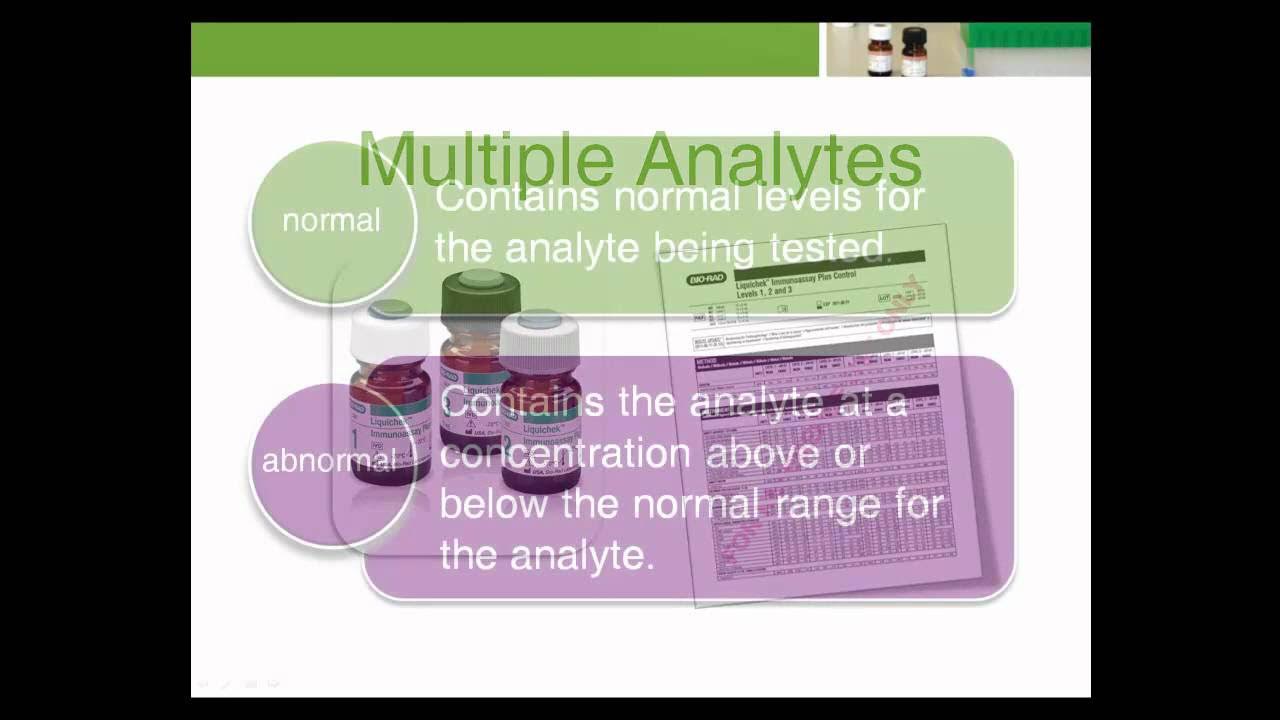What errors can be detected on an LJ chart?
Summary
TLDRThis video delves into the critical aspects of monitoring laboratory quality control (QC) using LG graphs, emphasizing the importance of detecting rule violations and taking corrective actions. It covers key elements like the mean and standard deviation, and how shifts in these can indicate issues such as bias or imprecision in the analytical system. The video also discusses troubleshooting steps, including evaluating data for random errors and ensuring the laboratory's QC materials are optimally used. The key takeaway is the responsibility of the technical team to maintain stable and accurate QC data through continuous monitoring and effective corrective actions.
Takeaways
- 😀 The Levey-Jennings (LJ) chart is a powerful tool for detecting errors in laboratory systems by monitoring the distribution of QC data points.
- 😀 The mean represents accuracy, and it should remain stable over time. A shift in the mean indicates a potential bias in the system.
- 😀 Standard deviation (SD) measures precision. Increased dispersion (wider Gaussian curve) signals imprecision, requiring further investigation.
- 😀 Rule violations can be detected using single rules (like 1-2s, 2-2s) or multiple rules, and both should be monitored regularly.
- 😀 Random errors often show as small fluctuations, while systematic errors (like bias or trends) indicate underlying issues with the system.
- 😀 Daily and periodic monitoring are essential to detect shifts in data and identify the causes of both random and systematic errors.
- 😀 Corrective actions must be taken when rule violations occur, with documentation specifying the nature of the violation and the decision on the run.
- 😀 Systematic errors can indicate a developing trend or bias, requiring root cause analysis (e.g., equipment calibration or reagent quality).
- 😀 Imprecision is identified when the Gaussian curve becomes wider, and corrective actions should focus on troubleshooting causes such as air bubbles or improper reagent mixing.
- 😀 Technicians must be trained to interpret LJ charts effectively, understand the rules, and apply corrective actions to maintain system reliability.
- 😀 Optimal use of quality control materials is crucial, and laboratories should ensure that their systems operate within acceptable limits of precision (e.g., coefficient of variation or biological variation).
Q & A
What is the primary purpose of using Levey-Jennings (LJ) charts in a laboratory?
-LJ charts are used to monitor the accuracy and precision of laboratory systems by tracking data over time. They help identify random and systematic errors by plotting results against defined control limits.
What are the key components of a Gaussian distribution in an LJ chart?
-The key components of a Gaussian distribution in an LJ chart are the mean (representing accuracy) and the standard deviation (representing precision). The data points are distributed around the mean in a bell-shaped curve.
What does a shift in the mean on an LJ chart indicate?
-A shift in the mean on an LJ chart indicates the development of a systematic error, also known as bias. This suggests a consistent deviation in results over time, which needs corrective action.
What does an increase in standard deviation on an LJ chart signify?
-An increase in standard deviation on an LJ chart signifies increased imprecision in the analytical system. This indicates that the data points are more spread out, which suggests random errors or variability in the system.
What is the difference between random and systematic errors in terms of their appearance on an LJ chart?
-Random errors appear as scattered data points that are still within the expected range but show increased variability (widening of the Gaussian). Systematic errors appear as a consistent shift in the mean of the data, causing a trend in one direction over time.
How should technicians address a 1-2s rule violation on an LJ chart?
-A 1-2s rule violation typically indicates a random error. The technician should monitor the situation, check if the issue resolves by the next day, and take no corrective action if the system returns to normal, unless the problem recurs.
What corrective action should be taken when a systematic bias is detected on an LJ chart?
-When a systematic bias is detected, the technician must troubleshoot the source of the bias. This may involve checking reagents, instruments, or procedures, and making necessary adjustments to restore accuracy.
What role does periodic monitoring play in identifying errors in laboratory systems?
-Periodic monitoring is essential for detecting emerging trends or systematic errors that might not be visible during daily checks. Supervisors should review data regularly to identify any shifts in the mean or increases in imprecision.
How can laboratories track and control imprecision in their systems?
-Laboratories can track imprecision by monitoring the coefficient of variation (CV) over time. They should compare CV against allowable biological variation (BV) charts to ensure it stays within acceptable limits, troubleshooting any issues when necessary.
Why is it important for laboratories to adhere to allowable imprecision limits for each analyte?
-Adhering to allowable imprecision limits is crucial for ensuring reliable, reproducible test results. If imprecision exceeds acceptable levels, the quality of lab results can be compromised, affecting patient outcomes and diagnostic accuracy.
Outlines

This section is available to paid users only. Please upgrade to access this part.
Upgrade NowMindmap

This section is available to paid users only. Please upgrade to access this part.
Upgrade NowKeywords

This section is available to paid users only. Please upgrade to access this part.
Upgrade NowHighlights

This section is available to paid users only. Please upgrade to access this part.
Upgrade NowTranscripts

This section is available to paid users only. Please upgrade to access this part.
Upgrade Now5.0 / 5 (0 votes)





